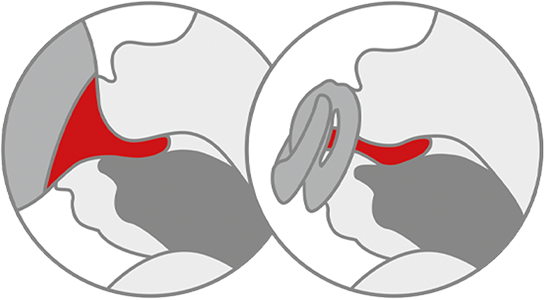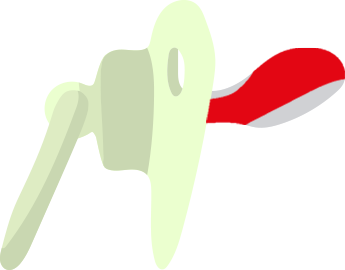
How does calming down work?
Screaming, crying and whinging are as much a part of a baby’s life as drinking, sleeping and cuddling. No wonder, as crying is the only language babies can use to express their needs. But it’s a language that’s difficult for worried parents to understand.
Of course, a parent’s deepest wish is to meet all their baby’s needs. All the more so when their baby cries for more than two and a half hours in one day, which isn´t at all uncommon.
So, it’s perfectly natural to have questions:
We, at NUK, listen carefully and show you possible ways to ease these worries.

HOW MUCH CRYING
is normal?

Why are you crying?
At the very beginning, babies and parents speak different languages. It takes time to get to know each other and to interpret the signals correctly. But take heart, it's not that difficult. And to get you started, here's the "Baby Dictionary":
HUNGRY
Restlessness, whinging, followed by crying. The whole body is tense. If you put your finger to their mouth, your baby immediately starts to suck. If you stroke their cheek, their head turns and their mouth opens. All these are signs that your baby is hungry.
TIRED
Turning away, rubbing eyes and ears and sucking fingers are possible signs of tiredness. Whinging and crying also indicate this. You might notice the body also becomes limp and the eyes shut easily.
OVERTIRED
Whinging and turning their head away and refusing attempts to play. Violent and shrill screaming may occur, their back may arch as well and their body may be very tense. Tip: cradle your baby in your arms to give a sense of security.
PAIN
Abrupt, shrill screaming and crying as well as a very tense body. If their tummy is swollen, a gentle massage or the “flying baby” position can help. If crying is prolonged for no apparent reason, a doctor should be contacted.

TEMPERATURE
Your baby may also cry if they are too hot or too cold. You can judge the temperature by putting your hand on the back of your baby's neck. Just touching your baby's hands and feet does not give a reliable impression.
BOREDOM
When babies are looking for attention, they often start whinging. They then react quickly when you pay attention to them by trying to make eye contact and focusing on your movements. Then it's time for play and activity.

Is it Okay, if I give you
a Pacifier?
Here is the reply from dental specialist, Dr med. dent. Hubertus v. Treuenfels: if the child is not content after bottle or breastfeeding, you can give a soother. Because soothers that we are all familiar with do exactly that: they soothe when babies cannot settle down and still want to suck. The non-nutritive need to suck is often still present after feeding, and, in this case, the soother can simplify parents' lives by soothing, as its name suggests.
Nevertheless, the soother should not be a “cure-all”. Experts recommend asking the same questions you would ask when considering giving medication:

- Circumstances: does the soother have to be given now?
- Dosage: how often does your baby need it?
- Duration of the therapy: how long does your baby need it?
- Side effects: What does it do besides soothe?
When looking for the perfect soother, many parents look at the shape and size. But first and foremost, you should make sure that the soother is right for your baby´s jaw. This means that the tongue’s movements are restricted as little as possible, which allows the jaw to grow optimally and teeth to align better.
Right for the jaw: the original  shape
shape

The original NUK shape ensures a smooth transition from the soother to the mother's breast, as the teat is modelled on a mother's nipple as she breastfeeds.
THINNER & NARROWER TEAT NECK
reduces pressure on the jaw and teeth. This helps prevent misalignment. Orthodontists also confirm this.


VARIOUS SIZES
ensure that the soother can always adapt optimally to your baby's palate.
What do I do, when nothing works?
When a baby cries, it can put an enormous strain on the parents. Some parents report weeklong phases when their baby screamed night after night from 11 pm to 5 am. But even in less extreme cases, parents can reach the end of their tether.
Some parents have had good experiences sleeping in separate rooms, so that they can take turns catching up on a little sleep. In the case of breastfed babies, a bottle (with expressed milk, for example) can also give the mother a little rest. But when the going gets tough, it is virtually impossible to give advice. No one can really know what it´s like for other children and their parents. Anyone who has not experienced it themselves has no idea. There are only two statements that are absolutely valid:
-
Never shake your baby.
Even a few seconds can cause lifelong damage. If you shake a baby, blood vessels and nerve tracts can rupture; breathing can stop. -
Never hesitate to get help.
It is perfectly normal for your baby’s crying to stress you. Even the best parents sometimes need help. Contact a baby clinic near you. There are always ways out! The National Centre for Early Help in Germany for example, offers a Search for crying clinics, that provide professional help when your baby’s crying won't stop and is too much to bear.

